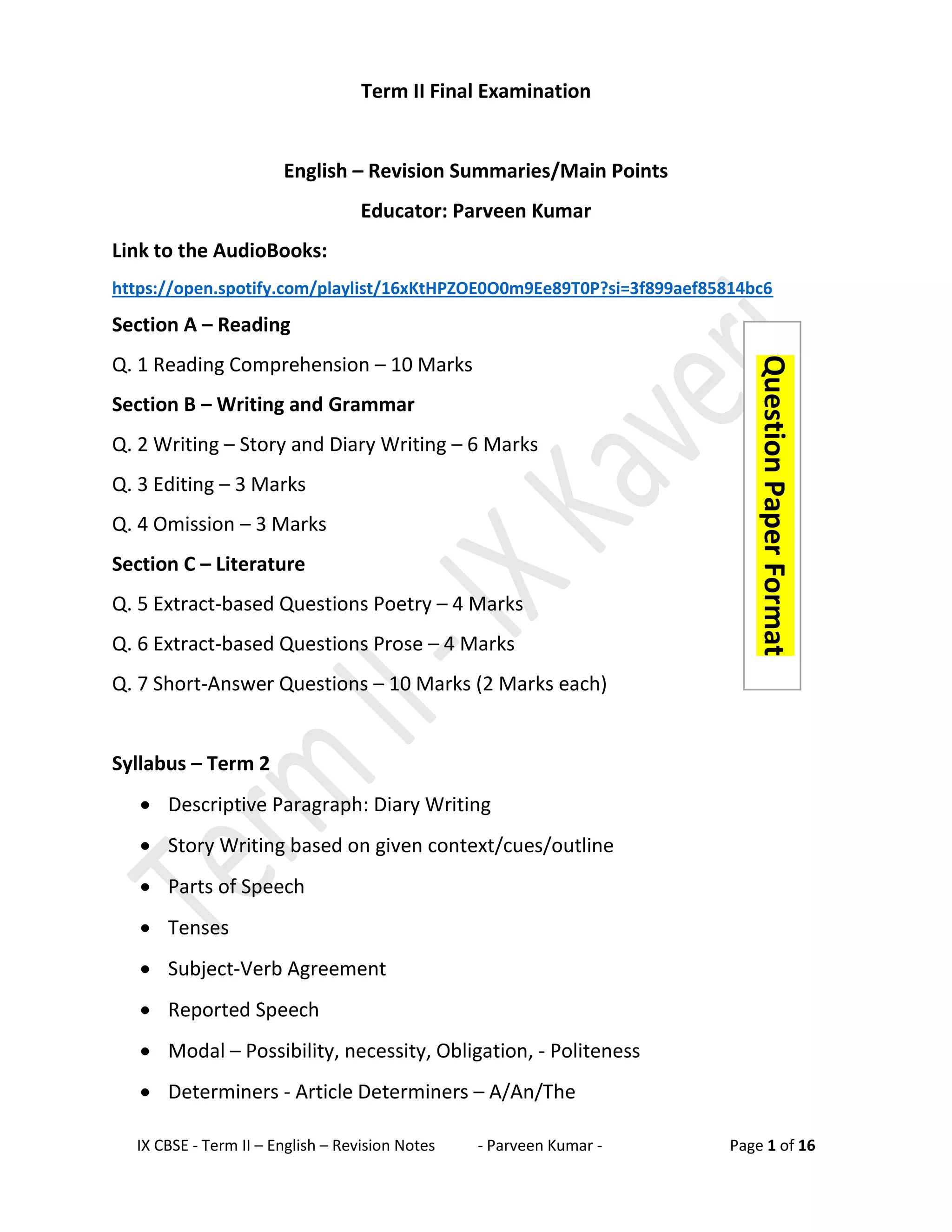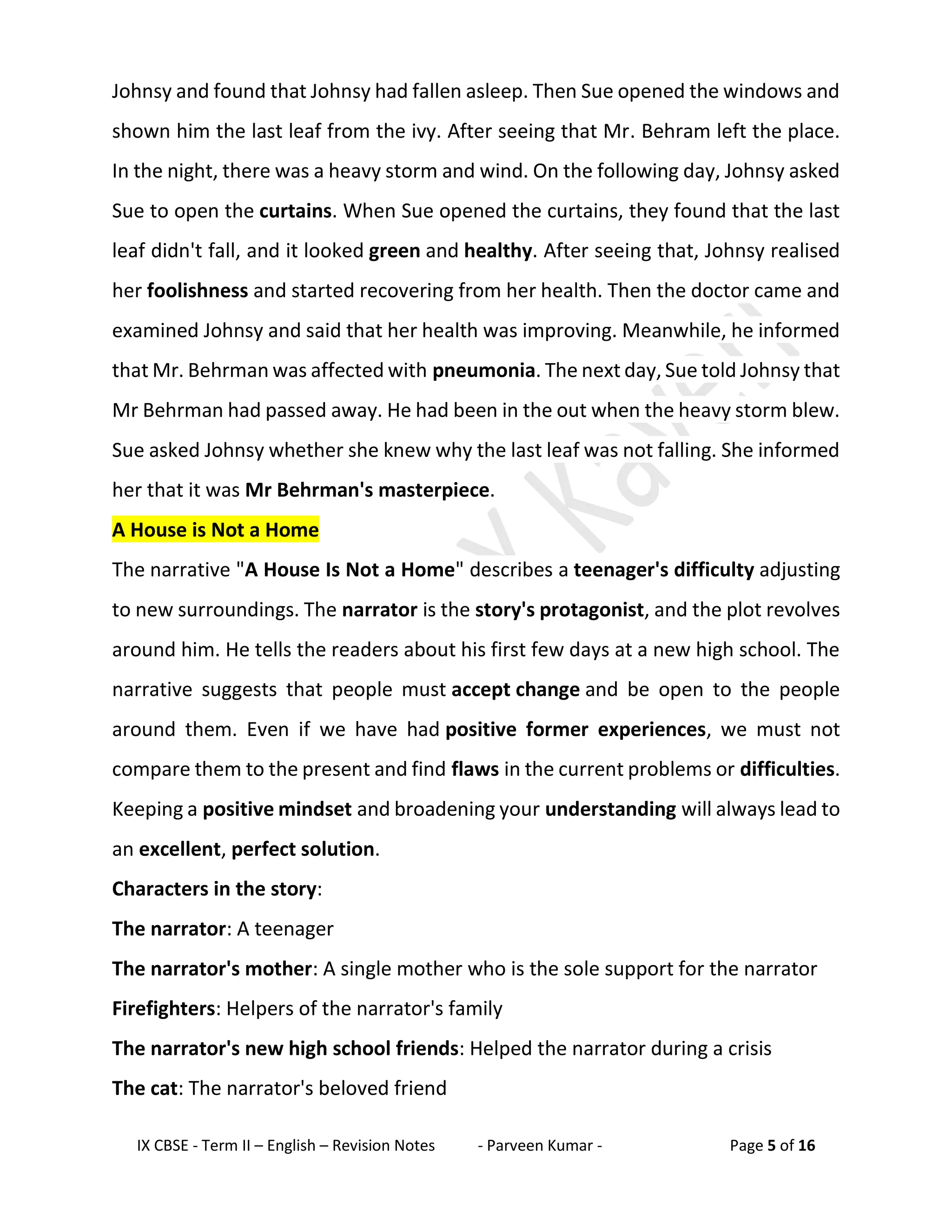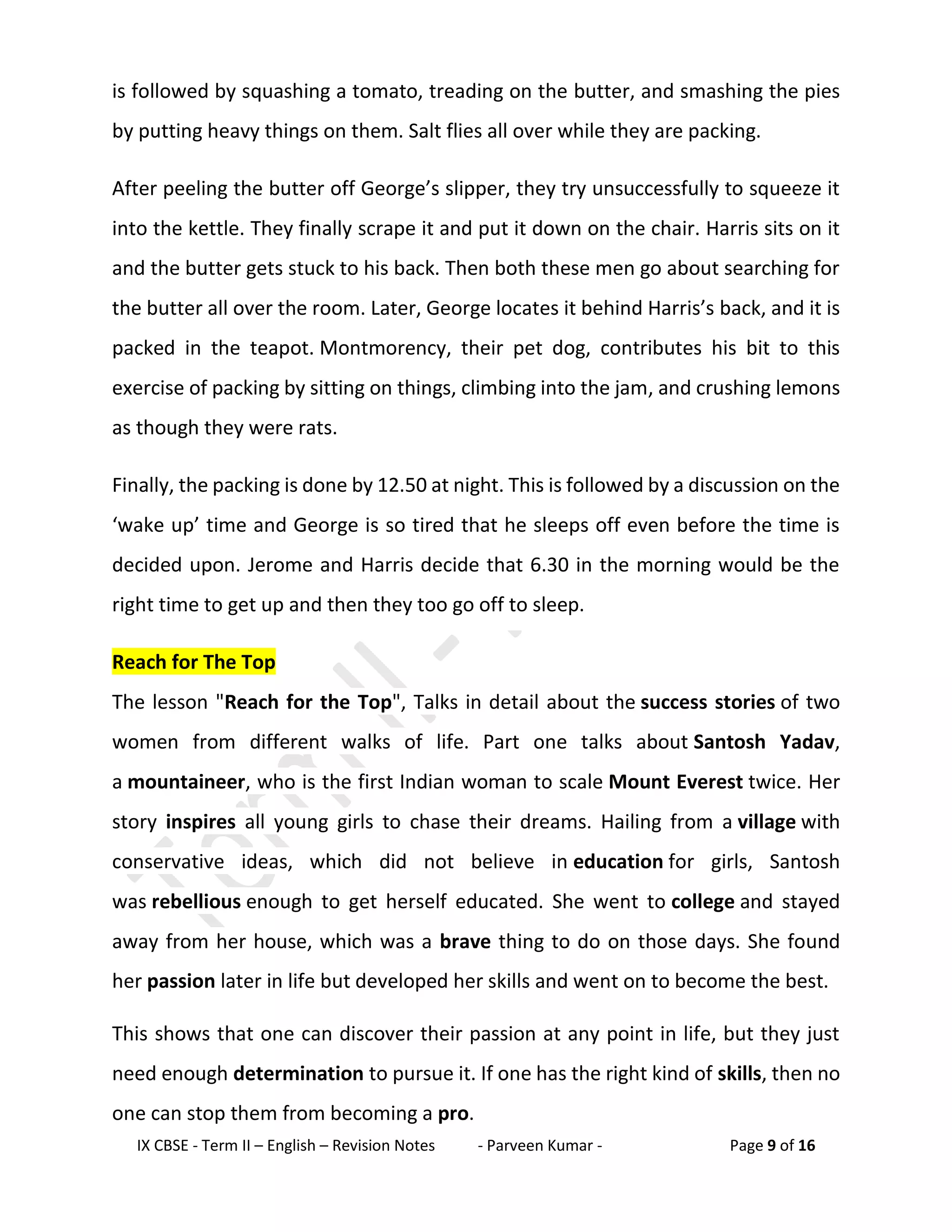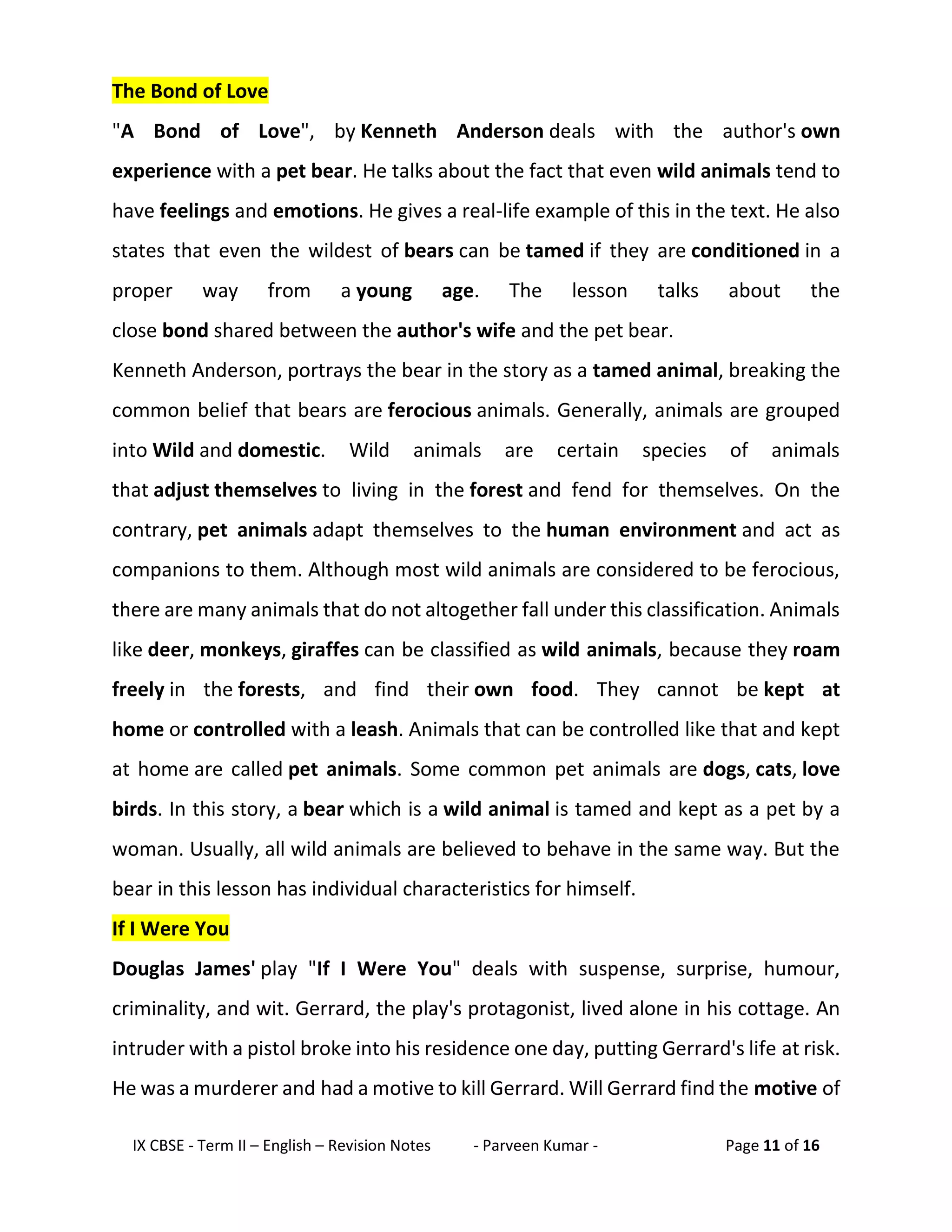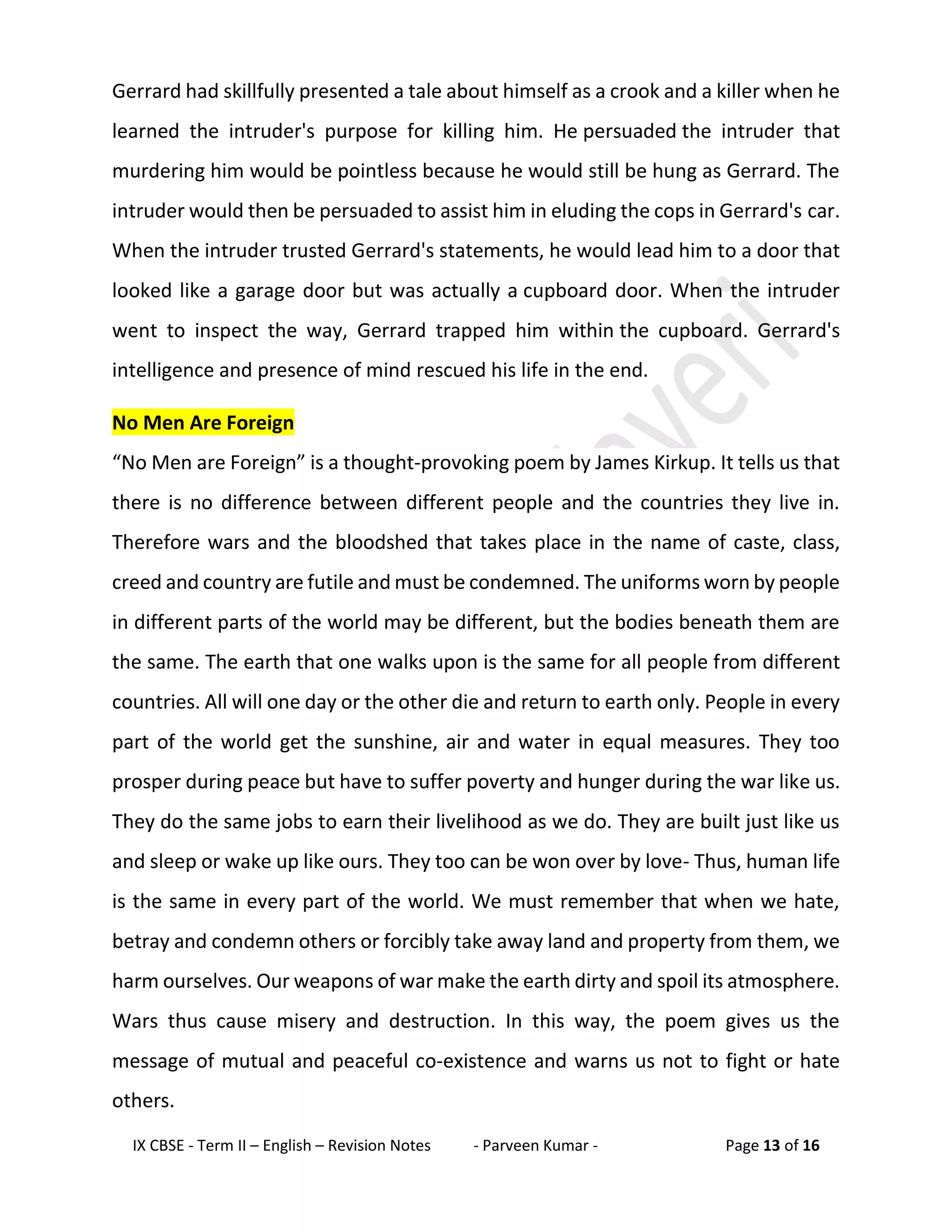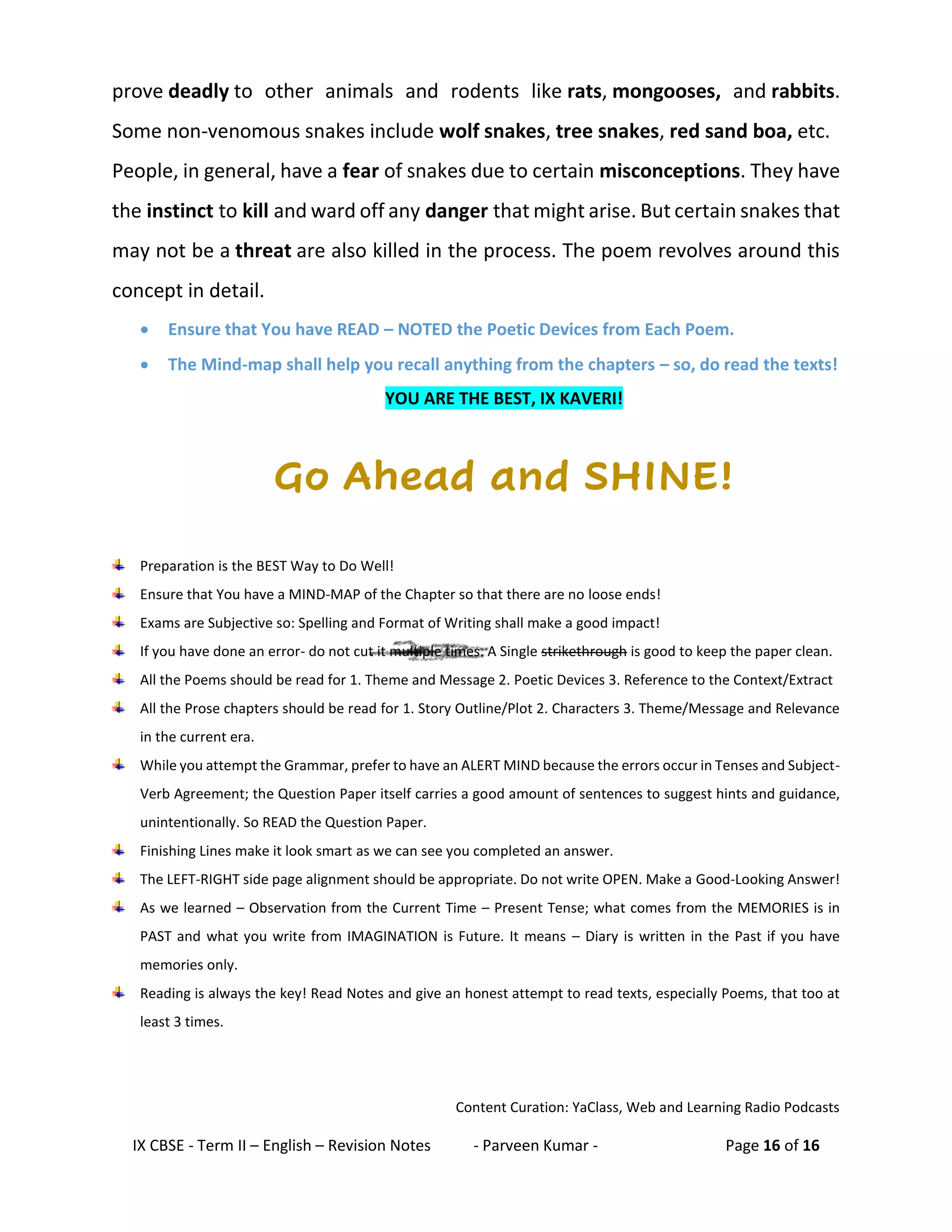The document is a collection of revision notes for the IX CBSE Term II English examination, covering reading comprehension, writing and grammar, and literature. It includes summaries of various literary works such as 'Weathering the Storm in Ersama', 'The Last Leaf', 'A House is Not a Home', and others, emphasizing key themes and characters. The notes serve as a guide for students to prepare for their exams with structured content on different literary elements.
